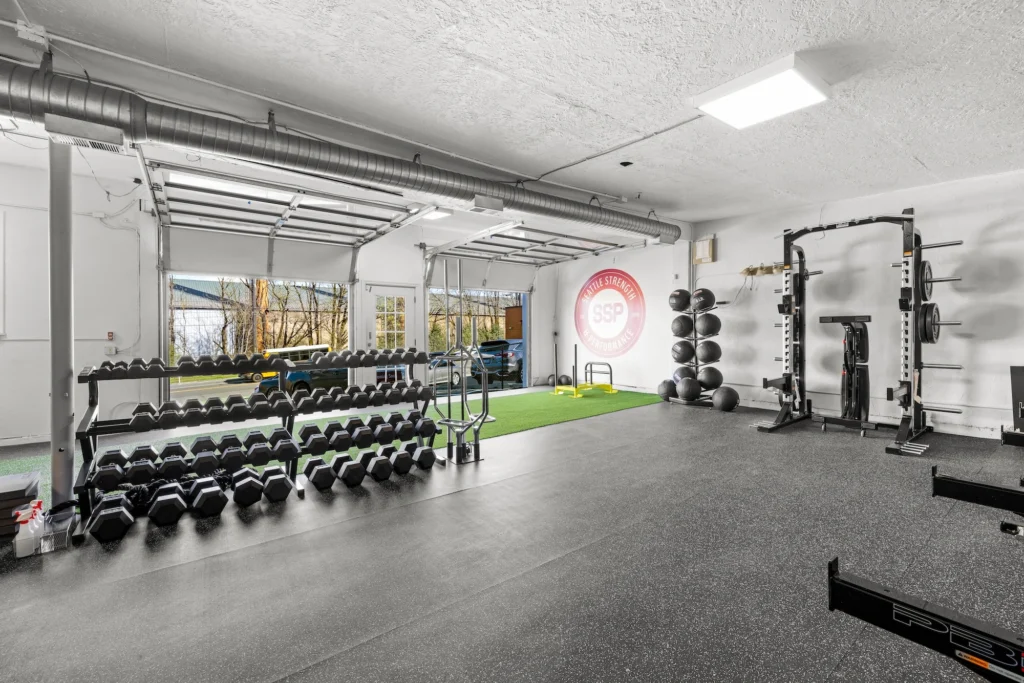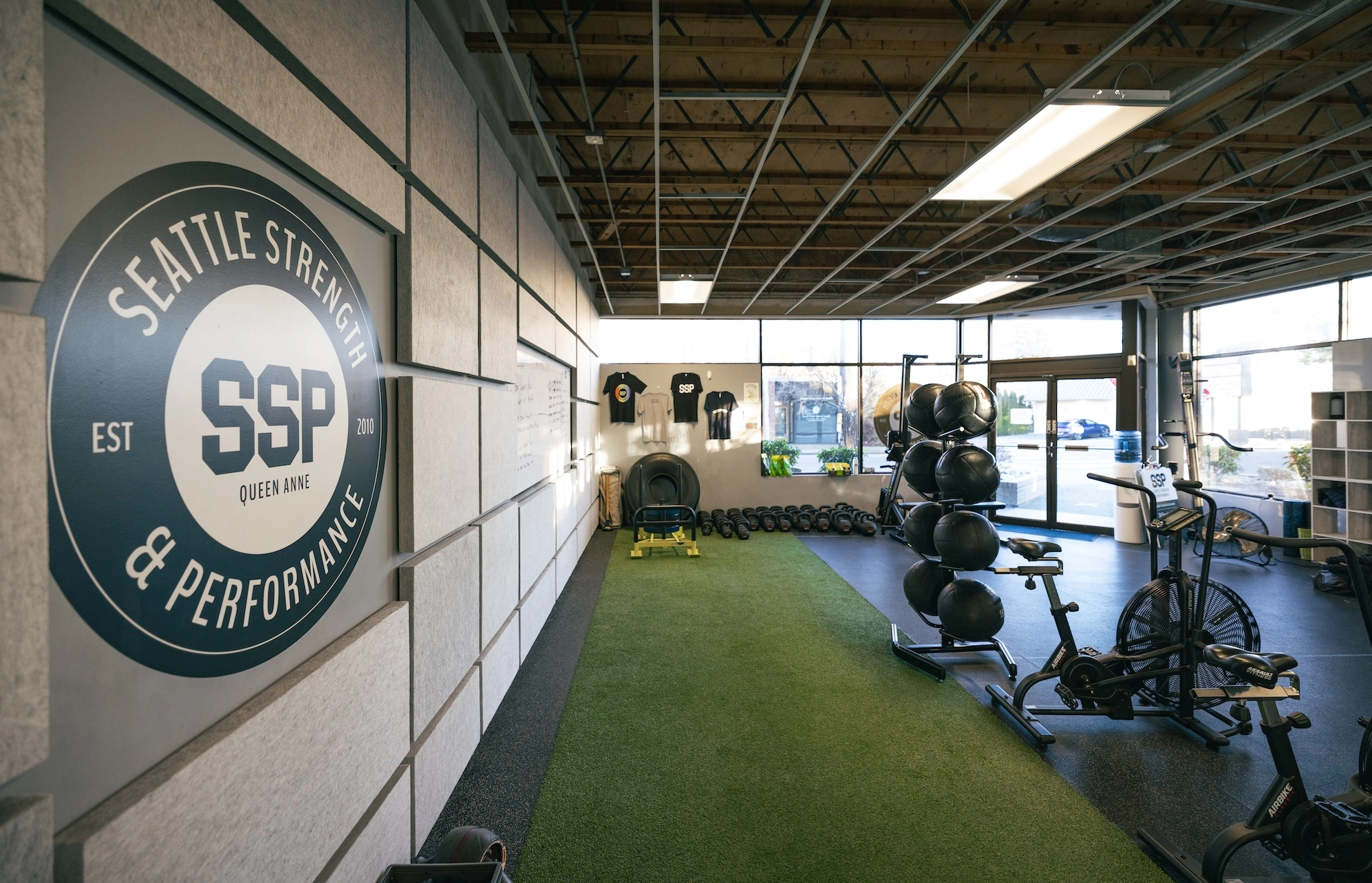Founded by an Amazon vet, Seattle Strength & Performance has become a mainstay in the Emerald City’s fitness scene in just a few years
When Chris Travis left his job as a product manager at Amazon back in 2019 to open up a gym, strength training had yet to truly take off, and opening a boutique fitness studio of any kind was a risky endeavor, marred by a high rate of failure. That’s to say nothing of the global pandemic that would soon wreak havoc on in-person workouts.
Fast forward to 2024, and Travis’ gym brand, Seattle Strength & Performance (SSP), counts over 600 members across three locations, boasting 50 to 60% year-on-year growth.
Travis’ story is inspiring but not common – according to data from the Health & Fitness Association that was published before the pandemic, around 81% of fitness studios failed within one year. There’s little reason to believe that number has measurably improved following COVID, despite the best intentions of fitness entrepreneurs across the country.
Seattle Strength & Performance’s success can be attributed in large part to Travis’ time at Amazon, where he honed two important but often opposing skill sets: an entrepreneurial boldness and willingness to take chances, tempered by an adherence to sound business fundamentals that make it relatively easy to build a brand and scale it.
Follow Your Passion, but Don’t Go in Blind
Travis fell in love with strength training during his time at Amazon, first engaging with the modality as a way to take care of his health. Eventually, he became hooked. He toyed with the idea of turning his fitness hobby into a career for a while before taking an initial leap in 2018.
“I didn’t want to be 80 years old and look back and be like, ‘I wish I would have tried this out,’” Travis tells Athletech News. “I’d rather have tried it for a couple of years, and if it failed, I could always go back to doing what I was doing.”
To start out, Travis honed his skills as a personal trainer while continuing his day job, building up a book of around 20 clients who he trained out of a local gym in the mornings before work and at night after he clocked out.
During this time, Travis learned some important fundamentals about the business of fitness, including how to acquire clients and sell them into training packages. He also learned how to create an engaging workout environment that would eventually serve as the basis for Seattle Strength & Performance.
In 2019, Travis left his job at Amazon to dive fully into fitness, coming up with a business plan for his first gym.
SSP opened its first studio, in Seattle’s Queen Anne neighborhood, in August 2020. The Queen Anne location started with around 20 members, made up of Travis’s personal training clients who followed him to his new gym concept.

Travis and his team battled through the pandemic, even staging outdoor workouts in late 2020 when Seattle banned indoor gatherings. By the end of 2021, SSP counted around 155 members, a significant amount for an 1,800-square-foot studio.
Still, it wasn’t until 2022 that Travis fully committed to a career in fitness. Around this time, he was still considering returning to the corporate world and running SSP as a side project. Instead, he went all in, deciding to open a second SSP location in Seattle’s Phinney Ridge neighborhood in May of that year.
“I talked to my network at Amazon – I could have gone back,” Travis recalls. “But I decided that wasn’t very exciting to me, that the most exciting thing was actually this new venture in fitness.”
Inside the Workout
Seattle Strength & Performance offers what the brand calls small-group, semi-private training, with classes made up of around 12 to 16 people. Workouts consist primarily of strength and functional training movements like deadlifts, kettlebell swings and box jumps, among other exercises. SSP also offers personal training sessions.
Before their first class, members complete a one-on-one assessment and receive a training plan customized to their goals.
Newcomers often confuse SSP with a CrossFit box, but it’s a bit different.
“We’re not CrossFit, I would call us more like a functional training gym that’s rooted in athletic performance,” Travis says, naming coaches like Mike Boyle and Eric Cressey as inspirations for the brand’s approach to fitness.
SSP members run the gamut from 10-year-old student-athletes to people in their 80s, although the brand’s core audience tends to be professional adults in the 40-to-60 year-old age range.
Execution Is Everything: SSP’s Blueprint for Success
SSP’s early growth was fueled almost entirely by word of mouth, as the brand’s strategic location in a walkable neighborhood in Seattle encouraged walk-ins. As the word continued to get out about Seattle’s cool, new strength training gym, SSP’s membership numbers swelled.
Today, the brand counts around 600 members across its three studios, with over 300 members at its Queen Anne location, 230 members at Phinney Ridge, and another 80-plus at its newest location in West Seattle.

In its early days, “We did no paid marketing at all,” Travis says. “Everything we did relied on getting people in the door, ensuring they had a really great customer experience and then creating a really strong word of mouth to drive referrals and grow and cultivate a community.”
While SSP still relies primarily on organic growth, it does do some paid marketing now, primarily to drive leads to its West Seattle studio, which opened earlier this year. Still, the brand usually spends $2,000 or less per month on marketing, Travis says.
Build a Career for Your Instructors
While business nous is important, the long-term success of a group fitness concept like Seattle Strength & Performance is highly dependent on the coaches who run its classes. For most members, coaching makes or breaks their class experience and determines whether or not they keep paying their monthly membership fees.
To grow its roster of coaches, SSP has focused on becoming a place where fitness instructors can build a career.
Most of the coaches at SSP are full-time employees, which is still a fairly rare phenomenon in the world of group fitness, although things are starting to change.
During a typical 40-hour workweek, SSP coaches will spend roughly half their time teaching fitness classes – the other half is spent on the business side.
“They’ll coach about 20 to 25 hours a week on the floor, but they may also do other functions in the business – that could be programming, it could prospect follow-up and lead gen, or it could be membership-experience related,” Travis explains.
There are several benefits to this approach: coaches gain full-time employment and the financial advantages that come with that, but they also feel a sense of ownership in SSP from a business standpoint. For SSP, this lowers employee turnover.
“I’ve found people who are excited and want to stick with the business long term, because it’s a very unique role,” Travis says.
Looking ahead, SSP plans to continue expanding in the Seattle area, where it sees opportunities to open more studios. Expanding to other cities is possible in the future, but for right now, the focus remains on the Emerald City.
“We have a lot more work to do in Seattle, so that’s where my focus is at,” Travis says. “There’s a lot of different neighborhood pockets that we can get into and keep expanding the brand.”












